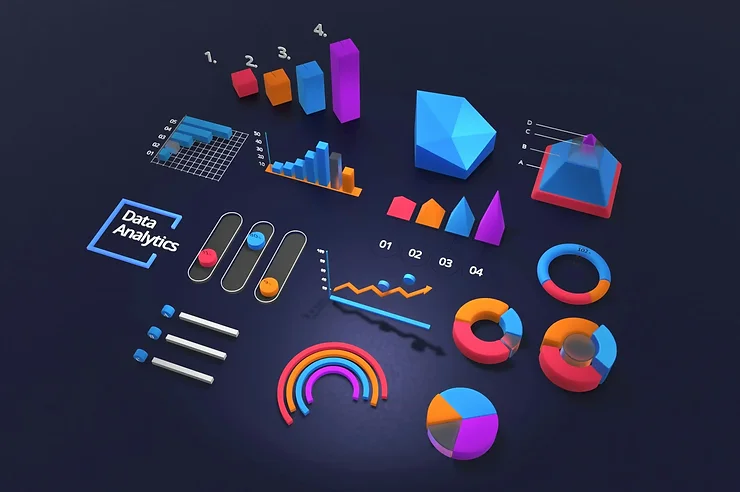
- October 24, 2024
1. Introduction
The landscape of data science tools is constantly evolving, with new tools and platforms emerging to cater to the ever-growing demand for data analytics and machine learning. In 2024, having the right set of tools can significantly impact the efficiency and effectiveness of your data science projects. Whether you are dealing with data wrangling, building machine learning models, or visualizing insights, the right tools can make all the difference. Here, we present a curated list of top data science tools to empower your analytics journey this year.
2. Data Wrangling Powerhouses: Tools to Tame Your Data
2.1 Pandas (Python)
Pandas is a versatile open-source library for data manipulation, cleaning, and analysis. It provides high-performance, easy-to-use data structures and data analysis tools for the Python programming language.
Key Features:
Data manipulation using DataFrames and Series.
Tools for reading and writing data between in-memory data structures and different file formats.
Support for handling missing data and reshaping data.
Pros:
User-friendly with extensive functionality.
Large community support with comprehensive documentation.
Cons:
Can be resource-intensive for massive datasets.
2.2 Apache Spark (Open-Source)
Apache Spark is a powerful open-source framework for distributed processing of large datasets across clusters. It excels in handling big data and provides APIs for Python, Java, Scala, and R.
Key Features:
Distributed data processing with resilient distributed datasets (RDDs).
Built-in modules for streaming, SQL, machine learning, and graph processing.
Integration with Hadoop and other data sources.
Pros:
Scalable and efficient for big data processing.
Offers machine learning capabilities through MLlib.
Cons:
Steeper learning curve compared to simpler tools.
2.3 Trifacta (Cloud-Based)
Trifacta is a cloud-based data wrangling tool that allows users to clean and prepare data for analysis. It uses machine learning to suggest transformations and data cleaning steps.
Key Features:
Intuitive, visual interface for data wrangling.
Integration with cloud platforms like AWS, Google Cloud, and Azure.
Machine learning-powered data transformation suggestions.
Pros:
Easy to use with a visual interface.
Automates data cleaning and transformation tasks.
Cons:
Limited customization compared to coding-based tools.
3. Building Powerful Models: Top Machine Learning Platforms
3.1 TensorFlow (Open-Source)
TensorFlow is an open-source machine learning framework developed by Google. It is widely used for building and deploying machine learning models, particularly deep learning models.
Key Features:
Supports deep learning and neural networks.
Extensive library with tools for building, training, and deploying models.
Compatible with both CPUs and GPUs.
Pros:
Highly flexible and scalable.
Large community support and extensive documentation.
Cons:
It can be complex for beginners.
3.2 Scikit-Learn (Python)
Scikit-Learn is a Python library for machine learning that provides simple and efficient tools for data mining and data analysis. It is built on NumPy, SciPy, and matplotlib.
Key Features:
Wide range of supervised and unsupervised learning algorithms.
Tools for model evaluation and selection.
Integration with other scientific Python libraries.
Pros:
Easy to use and well-documented.
Suitable for beginners and advanced users.
Cons:
Limited support for deep learning.
4. H2O.ai (Open-Source)
H2O.ai is an open-source platform that provides scalable machine learning and artificial intelligence tools. It supports a wide range of algorithms and is designed for both data scientists and business analysts.
Key Features:
Distributed in-memory processing.
Automated machine learning (AutoML) capabilities.
Support for various machine learning algorithms.
Pros:
Scalable and efficient.
User-friendly interface with strong AutoML features.
Cons:
Requires substantial memory for large datasets
5. Unveiling Insights: Effective Data Visualization Tools
5.1 Tableau (Commercial)
Tableau is a leading data visualization tool that helps users create interactive and shareable dashboards. It is widely used for business intelligence and data analytics.
Key Features:
Drag-and-drop interface for creating visualizations.
Integration with various data sources.
Interactive dashboards and story points.
Pros:
User-friendly with powerful visualization capabilities.
Strong community support and extensive resources.
Cons:
Can be expensive for individual users and small businesses.
5.2 Power BI (Commercial)
Power BI is a business analytics service by Microsoft that provides interactive visualizations and business intelligence capabilities. It integrates well with other Microsoft products and services.
Key Features:
Data connectivity with a wide range of sources.
Real-time dashboards and reports.
Integration with Azure and Office 365.
Pros:
Seamless integration with Microsoft ecosystem.
Affordable pricing with powerful features.
Cons:
Can be complex to set up and customize.
5.3 Matplotlib (Python)
Matplotlib is a Python library for creating static, animated, and interactive visualizations. It is widely used in the scientific and engineering communities for its versatility and ease of use.
Key Features:
Comprehensive library for 2D and 3D plotting.
Customizable plots and charts.
Integration with NumPy and other scientific libraries.
Pros:
Highly customizable and flexible.
Suitable for creating publication-quality plots.
Cons:
Steeper learning curve for complex visualizations.
6. Conclusion
The tools listed above are some of the best data science tools available in 2024, each offering unique features and capabilities to suit various aspects of data science workflows. Whether you are a beginner or an experienced data scientist, integrating these tools into your projects can help you streamline your processes and derive meaningful insights from your data. Explore these tools, experiment with their functionalities, and find the perfect combination to empower your analytics journey.



